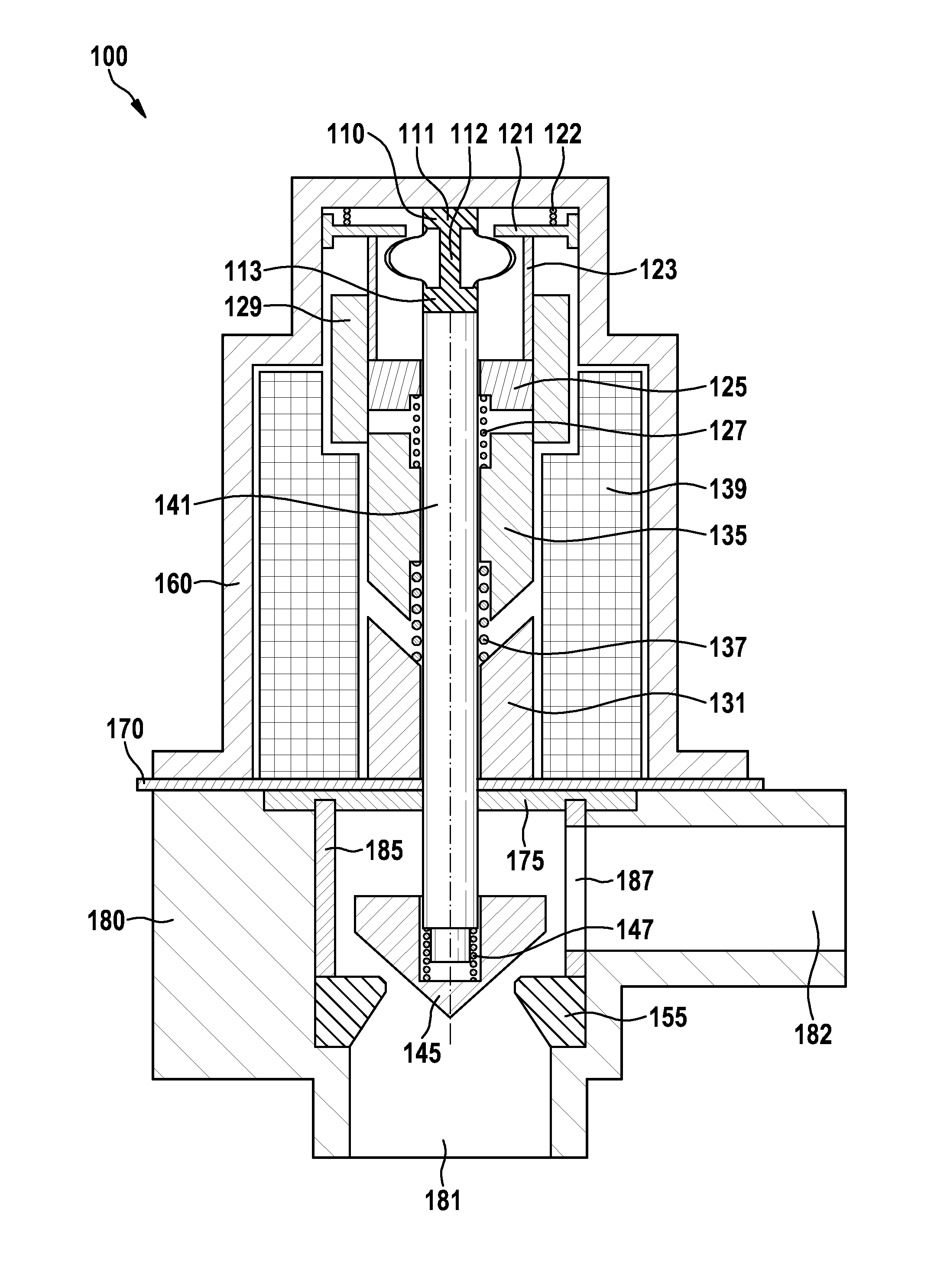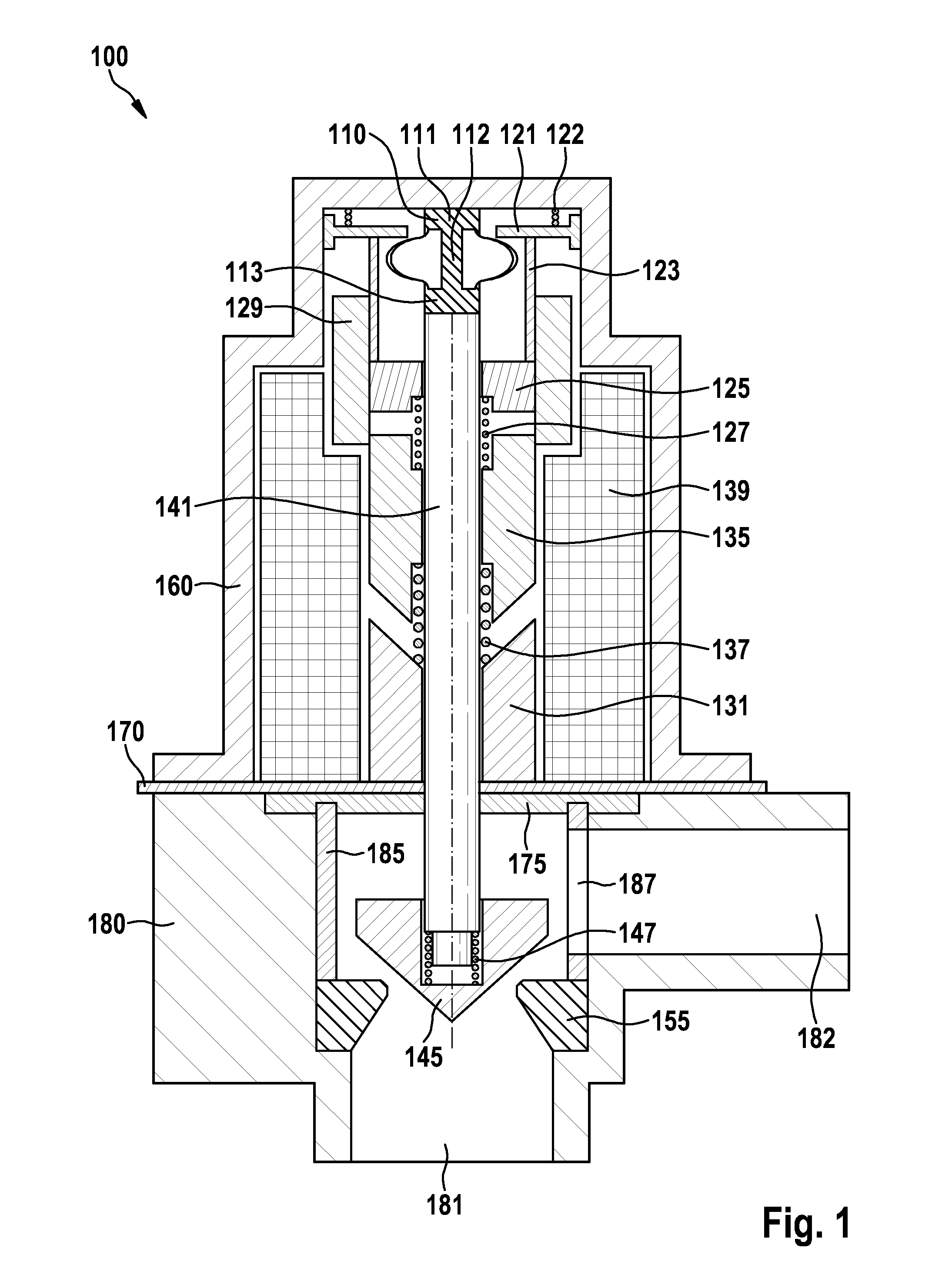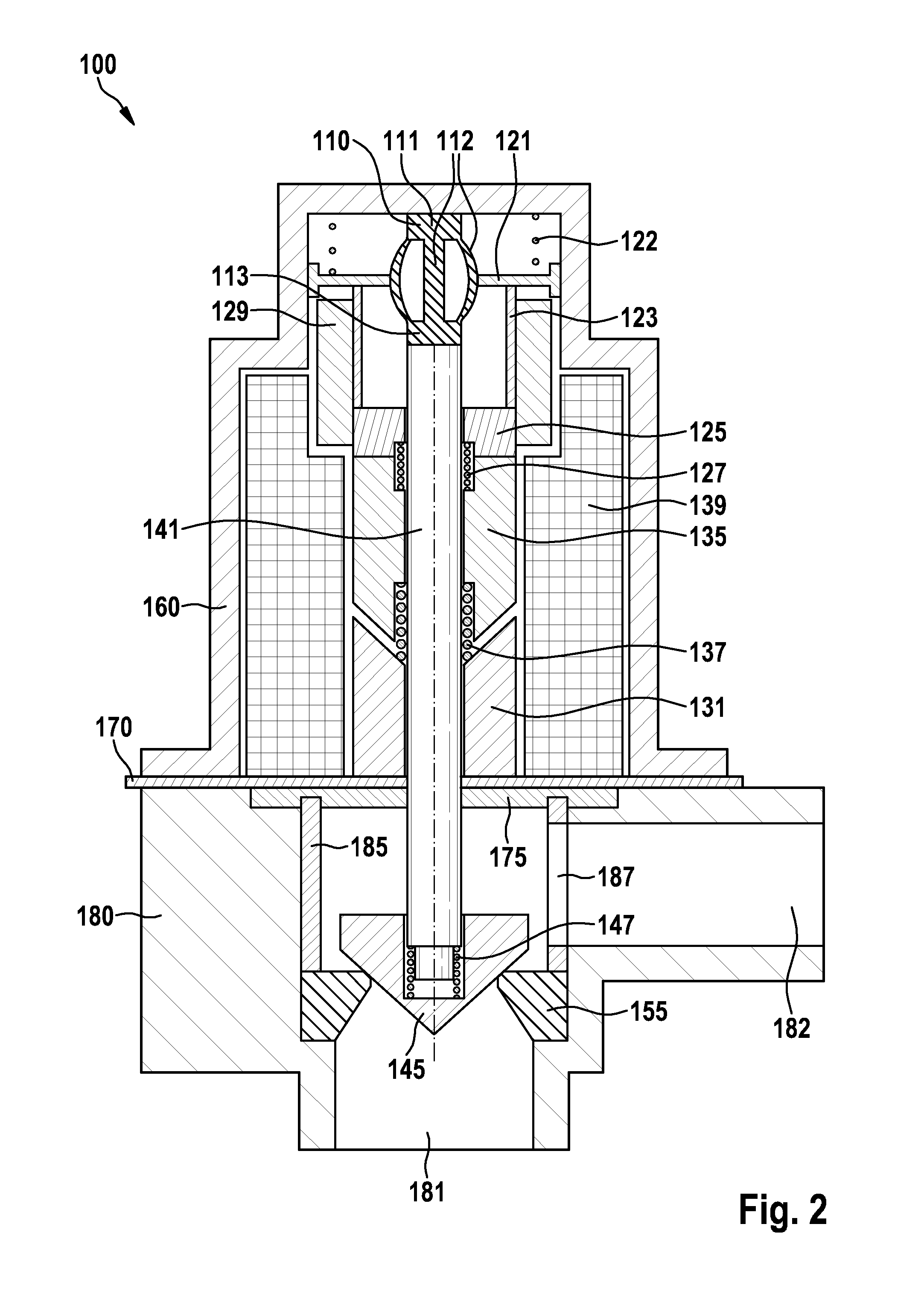Solenoid valve
a solenoid valve and valve body technology, applied in the direction of valve details, valve arrangement, operating means/releasing devices, etc., can solve the problems of inability to realize said fail-safe function, high permanent current consumption, and difficult to use such a cut-off valve in modern, efficiency-optimized vehicles. achieve the effect of preventing high permanent current consumption
- Summary
- Abstract
- Description
- Claims
- Application Information
AI Technical Summary
Benefits of technology
Problems solved by technology
Method used
Image
Examples
Embodiment Construction
[0033]FIG. 1 shows a schematic side view of a solenoid valve 100 that can be electrically actuated in an open state. The valve 100, which is embodied as a cutoff-valve and can particularly be used in a coolant circuit of a motor vehicle, comprises two housing parts 160, 180. The housing parts 160, 180, which are also referred to below as pole pot or pole housing 160 and as valve housing 180, are connected to one another via a mounting plate 170 that is disposed between the same.
[0034]The valve housing 180, which is designed for the through-flow of a medium or, respectively, a coolant, encloses an internal space and has two asymmetrically disposed ports 181, 182. The coolant delivered by means of a pump can be supplied to the valve housing 180 via the lower port 181 in FIG. 1 and can be discharged via the lateral port 182 (not depicted).
[0035]In the internal space, the valve housing 180 comprises a valve seat 155 and a closing element which is in the form of a sealing cone 145 and in...
PUM
 Login to View More
Login to View More Abstract
Description
Claims
Application Information
 Login to View More
Login to View More - R&D
- Intellectual Property
- Life Sciences
- Materials
- Tech Scout
- Unparalleled Data Quality
- Higher Quality Content
- 60% Fewer Hallucinations
Browse by: Latest US Patents, China's latest patents, Technical Efficacy Thesaurus, Application Domain, Technology Topic, Popular Technical Reports.
© 2025 PatSnap. All rights reserved.Legal|Privacy policy|Modern Slavery Act Transparency Statement|Sitemap|About US| Contact US: help@patsnap.com



